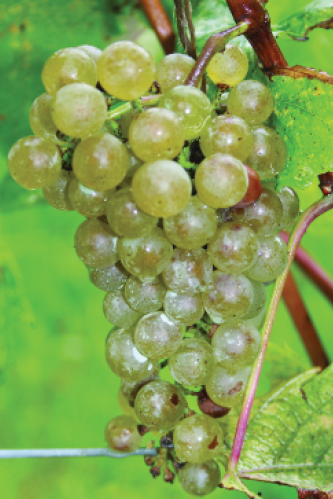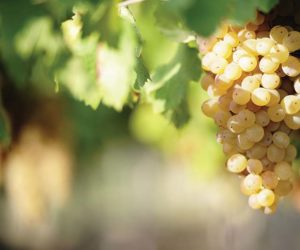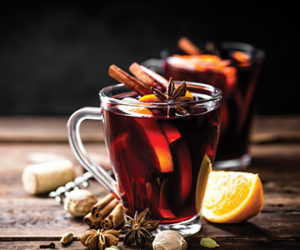
Sauvignon Blanc; the “other” white wine. A somewhat tongue-in-cheek statement, as I am referring to wine lovers who sought out an alternative to Chardonnay over the last 10 to 15 years. It is well known that Sauvignon Blanc enjoys a significant market share second to Chardonnay, however in many local wine regions it has a style and characteristic all its own. An alternative is far from what this variety is to the world of wine. This versatile grape is grown on just about every continent and made in to just about every style possible. We shall see that it holds its own in the world of wine and has earned its place amongst the noblest of white grapes.
Sauvignon Blanc originated in the Loire Valley of France and people started cultivating it as a wine grape starting sometime in the 19th century. The grape had originally been known as a wild grape in the region but was recognized for its potential as a wine grape by local winemakers. Its name, Sauvignon Blanc, is loosely translated to mean “wild white,” and its origins are likely that of an offspring of Traminer and some other unknown variety via accidental cross-pollination. Some have speculated that the other parent was Chenin Blanc, but complex DNA analysis has not been done to confirm this. Somewhere along the way in the Loire, it paired up with Cabernet Franc, again by cross-pollination, to produce Cabernet Sauvignon.
From a wine marketing aspect, the grape has certainly shown increased popularity, but that was not always the case. While the grape was originally known for sweet wine styles, in the mid-1980s, notable wine industry veteran and icon Robert Mondavi began marketing a style of Sauvignon Blanc he called Fumé Blanc. This wine set it apart from the sweeter styles of the day, being a dry, mildly-oaked version of Sauvignon Blanc that went on to become one of the signature brands for his now-famous wine estate. In addition, other producers from all over the world jumped on the bandwagon as well. The name Fumé Blanc has lost some luster and distributors have encouraged producers to go back to naming the wine as a varietal because it is easier to market and less confusing to consumers.
In total there are about 200,000 acres of Sauvignon Blanc planted in the world. There are extensive plantings in California, New, Zealand, Chile and Australia, with each of those regions producing styles that are tied to the viticulture practices and climates of each region. For white wine lovers, there is seemingly a style for everyone. The variability in climates where the grape is grown is evident in the fruit it produces. In cooler regions the grape produces fruit of crisp acidity and more herbaceous characters. Conversely, in the warmer growing regions, the grapes tend to be low in acidity, possibly requiring additional acidity adjustments.
Fruit cropping level and canopy management play a major role in the development of flavor profile in the grape. The grapes need sunlight to develop more mature flavors. Without sunlight exposure the grapes tend to have more herbaceous characters. Common flavor descriptors include: melon, pear, fig, citrus (grapefruit, lemon, lime, orange), tropical (pineapple, passion fruit, kiwi), banana, grassiness, lemongrass, herbs (dill, thyme, tarragon), gooseberry, fennel, vanilla, flinty, and chalky. The challenge to winemakers is making the wine with the best balance of all these characters. The dry wines of France tend to the latter terms, while those of the New World focus on more fruit-forward terms. In France, the grape is commonly blended with Sémillon in various ratios depending on the locations in Bordeaux or the Loire. This practice has carried into the New World as well. These wines are generally dry, and historically have displayed high levels of sulfur dioxide due to winemaking practice, which has since improved. Blending with Sémillon is done in the US, but Sauvignon Blanc must comprise of at least 75 percent of the blend to be labeled as Sauvignon Blanc. The most noble in style, which stands out the most, is produced by first growth producer Château d’Yquem in the Sauternes region in the Loire Valley. These sweet wines are produced from grapes that were infected by the noble rot, Botrytis cinerea.
My experience with Sauvignon Blanc follows two completely different paths at two different wineries. At the first winery I worked for, we brought in approximately 15 tons of Sauvignon Blanc per year. We had two vineyard sources; the estate vineyard had a west-northwest exposure and the other had a southeast exposure. Both vineyards were on hillsides with the same rootstock and the environmental conditions ripened the fruit at about the same time, but the flavor profiles of each vineyard, as well as within each vineyard, varied. In the estate vineyard, the top of the hill was trained out on a lyre quadrilateral trellis, which produced fruit with more citrus quality. The lower portion, which was trained on bi-lateral cordon, produced more tropical flavors. The other vineyard was trained on a bi-lateral cordon as well, and also produced more tropical-based flavors. In any given vintage, the vineyards had some degree of grassiness, which is typical to the varietal. Typical cropping here was about 3 tons per acre. This was the key component there. As a small producer, they were heavily reliant on the given growing season and, depending on the year, the level of grassiness would go up or down and be reflected in the final product. They were dependent on getting as much fruitiness as the season would give.
In contrast, harvest timing was more important at the larger producer. We brought in tens of thousands of tons.To get the grassy flavors, fruit was harvested early, between 19-21 °Brix. This was referred to as the “green harvest.” Those tanks were held separate from the later fruit with more citrus and tropical flavors for later blending. Typical cropping in this scenario was in excess of ten tons per acre. Thus you can see the variability of the wines. Ironically, the wines from both producers occupied the same price point in the market.
Go figure, the smaller one struggles for a marketplace niche and the other enjoys a very comfortable market share because of its distribution network. The key to Sauvignon Blanc is to be able to consistently produce the same flavor profile that much of the wine drinking public wants. What I’m getting at here is the broad range of styles we see with Sauvignon Blanc given regional variations. Throw the different regions of the world in there and you see the diversity of Sauvignon Blanc today.
An important component to making a great Sauvignon Blanc is to take advantage of cooler fermentation conditions to enhance the development of fermentation esters, also referred to as fermentation bouquet. The fermentations should be carried out at 55–60 °F (13–16 °C). Esters are derived as ethanol and higher alcohol by-products from alcoholic fermentation. Higher alcohols, also called fusel oils, are amyl alcohols, butanols or propanols in various isomers. The acids that are present are not limited to the common acids in the grape, including tartaric, malic or succinic, but also to amino acids, and those acids produced as a product of yeast metabolism. I have intentionally oversimplified this reaction because the interplay between these compounds is extremely complex. The resultant reaction produces fruity esters. A couple of common examples of esters are ethyl butyrate (pineapple) and isoamyl acetate (banana), both of which can be found integrated in the most complex of Sauvignon Blancs.
Keeping the wine cool post fermentation is critical as these products are relatively short lived, which is one reason why white wines are generally not considered to have long aging potential. The esters I just mentioned are degraded at higher temperatures so post fermentation storage should be cool (60 °F/16 °C or less). And wines in the bottle should be stored cool as well (55-60 °F/13-16 °C). While most white wines do not age well, I have tasted a couple of fine examples of 50-year-old Sauvignon Blancs that have aged very gracefully. One producer was from Australia, and the other, interestingly enough, was from California, vintage 1960. Knowing the owner of those wines, I know that they were flawlessly cellared for their entire life and it was a special treat to experience them.
The use of barrels, with respect to Fumé Blanc styles, is not as common to those styles as for Chardonnay. But subtle use of oak can enhance the wine, adding vanilla and/or cream characters. I would not recommend working with barrel types that advertise any greater than medium toast. Light or medium toast is best, with regular tasting during aging to ensure you do not over-extract the oak characters and negatively effect the wine. In a commercial setting, my experience has shown that using puncheons (500 L) gives an optimum surface area to volume ratio for subtle extraction of oak characters.
While the puncheon approach is not practical for the home winemaker, if you can work with large batch sizes, consider purchasing a new barrel (227 L/60 gal.) for short barrel fermentation and aging with Sauvignon Blanc. Then move the barrel to your red wine program. Unfortunately it is not practical to purchase a new barrel for this each year and then leave it unused until the next vintage, and keeping the wine in the new barrel for an entire year would be too long. While this time in the barrel is dependent on the rate of oak extraction, consider a four-month fermentation/ aging tenure sur lie and then moving the wine to stainless steel. If you are using a 30-gallon (114-L) barrel, this aging period should be cut to around half that of 60-gallon (227-L) barrel. So it would be up to you, the winemaker, to judge the timing of these events. Also consider stirring the lees periodically to enhance mouthfeel, this process is referred to as bâtonnage. Towards the end of the sur lie period the bâtonnage process is stopped, which allows the wine to naturally clear prior to its first racking. In the absence of the required volumes to produce a barrel, oak products such as chips or staves can be used, but be very careful as these products have differing rates of extraction and flavor profiles based on the length of time left in contact.
Sauvignon Blanc Recipe
yield: 5 gal/19 L
Ingredients
• 100 lbs. (45 kg) Sauvignon Blanc fruit or 5 gallons (19 L) fresh juice (racked off the grape solids).
• Distilled water
• 5 grams Lallemand QA23 yeast
• 10% potassium metabisulfite (KMBS) solution. Weigh 10 grams of KMBS, dissolve into about 50 milliliters (mL) of distilled water. When completely dissolved, make up to 100 mL total with distilled water.
• 10 grams Fermaid K (or equivalent yeast nutrient)
• 5 grams Diammonium phosphate (DAP)
Other equipment or needs
• 6-gallon (23-L) food-grade plastic bucket for fermentation
• 5-gallon (19-L) carboy
• 6-gallon (23-L) carboy
• (1-2) 1-gallon (3.8-L) jugs
• Airlock/stopper
• Racking hoses
• Inert Gas (nitrogen, argon or carbon dioxide)
• Refrigerator (~45 °F/7 °C) to cold settle the juice.
• Ability to maintain a fermentation temperature of 55 °F (13 °C)
• Thermometer capable of measuring between 40–110 °F (4–43 °C) in one degree increments
• Pipettes with the ability to add in increments of 1 milliliter
• Clinitest® tablets
• Ability to test for sulfur dioxide
Step by step
1. Clean and sanitize your winemaking equipment and all surafaces.
2. If working with fresh grapes, crush and press the grapes. Do not delay between crushing and pressing. Move the must directly to the press and press lightly to avoid extended contact with the skins and seeds.
3. Transfer the juice to a 6-gallon (23-L) bucket. During the transfer, if you are using fresh-crushed grape juice, add 16 milliliters of 10% KMBS solution (This addition is the equivalent of 40 ppm SO2). If you are starting with 5 gallons (19 L) of juice, add 13 mL of solution. Move the juice to the refrigerator.
4. Let the juice settle at least overnight. Layer the headspace with inert gas and keep covered.
5. When sufficiently settled, rack the juice off of the solids into the 6-gallon (23-L) carboy.
6. Add Fermaid K or similar yeast nutrient (5 grams).
7. Prepare yeast. Heat about 50 mL distilled water to 104 °F (40 °C). Do not exceed this temperature as you will kill the yeast. The end result is you want 50 mL of water at 104 °F (40 °C). Sprinkle the yeast on the surface of the heated water and gently mix so that no clumps exist. Let sit for 15 minutes undisturbed. Measure the temperature of the yeast suspension and the juice. You do not want to add the yeast to your cool juice if the difference in temperatures of the yeast and must exceeds 15 °F (8 °C). Acclimate your yeast by taking about 10 mL of the cold juice and adding it to the yeast suspension. Wait 15 minutes and measure the temperature again. Do this until you are within the specified temperature range.
8. Stir the yeast to get a uniform suspension. When the yeast is ready, add it to the carboy.
9. Initiate the fermentation at room temperature ~(65-68 °F/18-20 °C). Once fermentation starts, (~24 hours) move to a location where the temperature can be kept at 55 °F (13 °C).
10. Two days after fermentation starts, dissolve the DAP in as little distilled water required to completely go into solution (usually ~20 mL). Add directly to the carboy.
11. Normally you would monitor the progress of the fermentation by measuring Brix. However, entering the carboy to measure the sugar can infect the fermentation with undesirable microbes. So at this point, the presence of noticeable fermentation is good enough. If your airlock becomes dirty by foaming over, remove it, clean it and replace as quickly and cleanly as possible. Sanitize anything that will come in contact with the juice.
12. Leave alone until bubbles in the airlock are about one per minute.
13. After about two to three weeks. It is time to start measuring the sugar. Test and record your results. If the Brix is greater than 7 °Brix wait another week before measuring. If the Brix is less than 7 °Brix; begin measuring every other day.
14. Continue to measure the Brix every other day until you have two readings in a row that are negative and about the same. This should be -1.5 °Brix or lower for a dry wine.
15. Measure the residual sugar using the Clinitest®. Follow the kit instructions.
16. If the wine is dry, less than 0.2%, rack to the 5-gallon carboy and control for headspace. Add 16 mL 10% KMBS solution to inhibit the MLF, lower the temperature, ~45 °F (7 °C).
17. Let the lees settle for about two weeks and stir them up. Repeat this every two weeks for eight weeks. This is called bâtonnage.
18. After the second stir (after the fourth week), check the SO2 and adjust to 30-35 ppm free. Use the sulfite calculator at www.winemakermag.com/guide/sulfite to make additions.
19. Let the lees settle for another two weeks. At this point, the wine is going to be crystal clear or a little cloudy. If the wine is cloudy, then presumably, if you have kept up with the SO2 additions and adjustments, temperature control, kept a sanitary environment, and there are no visible signs of a re-fermentation, then this is most likely a protein haze. Fine with bentonite to clarify.
20. While aging, test for SO2 and keep maintained at 30-35 ppm. Test for titratable acidity. The target is about 6.5 g/L. The pH target is around 3.1–3.5, but rely more on the TA as that is contributing to mouthfeel.
21. Once the wine is cleared it is time to move it to the bottle. This would be about six months after the onset of fermentation.




